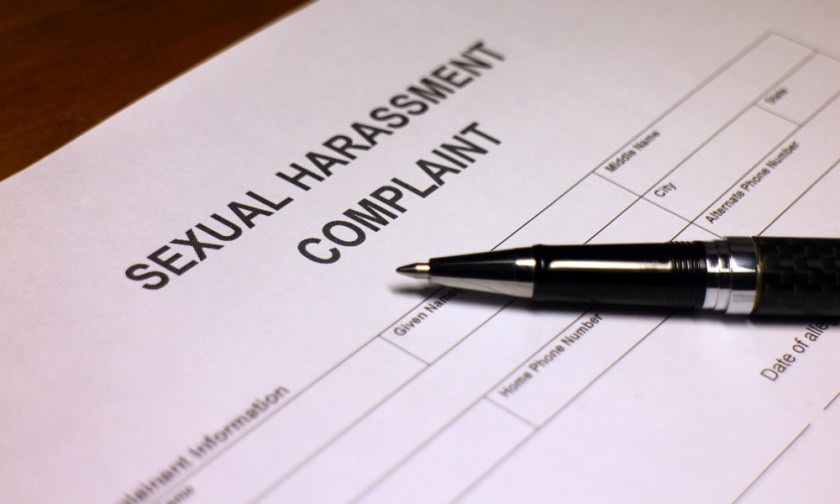A young male apprentice hairdresser has been awarded $30,000 in compensation after his complaints of sexual harassment and victimisation were substantiated by the NSW Civil and Administrative Tribunal.
While this decision was made in relation to a hairdressing salon, employers in the aesthetics industry at large may unfortunately face similar issues, according to Michelle Blewett, from HR specialists Workforce Guardian.
“The apprentice had completed just three months’ service. However, the Tribunal found that the harassment and victimisation had a `significant impact’ on him,” says Michelle. She continues:
The apprentice submitted that the treatment he received in the salon by both a principal of the business and a colleague were unwanted and unwelcome. He claimed that he was subjected to actions of a sexual nature including unnecessary touching. Such actions included:
- The principal of the business stroking the apprentice’s palm when he gave him money to purchase goods for the salon
- A male colleague requiring the apprentice to hold his hand unnecessarily when he was showing him how to blow dry hair
- A male colleague putting his hands around the apprentice’s waist
- A male colleague unnecessarily brushing against the apprentice
- A male colleague slapping the apprentice’s bottom with a ruler, and attempting to provoke a reaction from the apprentice by stating “You should slap me on the bum. I like being slapped on the bum”.
There had also been spoken comments of a sexual nature including:
- A male colleague referring to the apprentice as “his bitch”
- A male colleague stating that they were “like a gay couple” and “close”, in front of customers
These words and actions caused the apprentice humiliation and distress, and exacerbated his depression. The apprentice complained about the treatment, expressly alleging to the principal of the business that it was sexual harassment (as well as complaining of underpayment and bullying).
The responses of the principal included:
- Rationalising the behaviour by stating “I’m sorry about what happened before. Hairdressers are like racehorses. They’re all equal, but they need a pat on the bum to go faster”.
- Normalising the behaviour by stating “I used to work in a restaurant. All the boys used to grab me by my boobs.”
- Terminating the apprentice’s employment
The tribunal found that these responses were tantamount to victimisation.
The apprentice was awarded $30,000 in compensation, which needed to be paid by the employer within 21 days of judgment.
ADVICE FROM WORKFORCE GUARDIAN
What are an employer’s legal obligations regarding sexual harassment?
An employer may be held to be legally responsible for acts of sexual harassment performed by employees in the workplace under the doctrine of “vicarious liability”. To avoid liability, an employer must take all reasonable steps to prevent sexual harassment from occurring in their workplace. Such reasonable steps include:
- Implement an appropriate sexual harassment policy, and communicate its contents to all employees upon induction into the business. The policy should be monitored and amended as necessary.
- Take appropriate action upon receiving complaints of sexual harassment, including conducting a thorough workplace investigation.
A workplace free from sexual harassment helps to maintain productive workplace relationships and can improve employee performance.
As demonstrated by the case outlined above, because the apprentice was subjected to sexual harassment at work, and his concerns were not addressed by management, his depression and anxiety was exacerbated and consequently, he could not perform at work.
This particular apprentice has decided to leave hairdressing and work as a barber instead because of his fears about the environment in a hairdressing salon.
The salon has lost in terms of the productive work it could have gained from the apprentice, as well as time and money in recruitment costs.
What should be included in a sexual harassment policy?
We suggest that a sexual harassment policy include the following:
- A strong opening statement clearly stating that sexual harassment in the workplace is against the law, and will not be tolerated.
- A clear definition of sexual harassment.
- Specific examples of sexual harassment that may be relevant to the particular working environment. This can include examples of sexual harassment at functions, conferences or off-site trips connected with work.
- A statement of what is not sexual harassment (for example, asking a person at work on a date – once!)
- An outline of the disciplinary action that will be taken if the policy is breached.
- A statement regarding the responsibilities of management and employees respectively.
- An outline of the internal complaints handling procedure, with an assurance against victimisation
- Information regarding where individuals can seek help or make complaints.
Create a harassment-free culture in your business
Once compliance is sorted, management can then take steps to create a harassment-free culture. Some tips to do this include:
- Demonstrate leadership on the issue. As a manager, you have tremendous influence over the company values. Whether you like it or not, you are a role model by virtue of your position. Accordingly, your words and actions should demonstrate that sexual harassment and victimisation are not part of your personal core values.
- Communicate about the problem with staff, in an empathetic and understanding manner. This is key when educating staff about the sexual harassment policy upon induction, as well as when responding to complaints.
- Ensure that all members of the team can approach you openly to discuss such issues. Staff members may not be a party to an incident, but may still feel uncomfortable if they were a bystander. These staff members need to feel confident to approach you if they see untoward behaviour toward a colleague
- Workforce Guardian is Australia’s leading HR and employment relations service for employers. It offers a template anti-harassment policy, and its HR Consultants can provide verbal and written advice on these issues, as well as workplace investigation services if needed. Call 1300 659 563.



